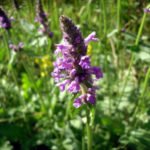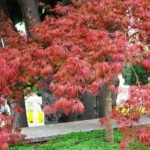The mountains of southeastern China are distinguished by an exceptional wealth of flora, and if the climate at the foot and at low altitudes is tropical and subtropical, then it becomes temperate above, and many plants of this zone have long come to our gardens.
A characteristic feature of this mountain flora is the abundance of Cypripedium, of which there are up to 15 species in these mountains. They are mainly distributed in the forest belt and rarely go into the alpine. But in sparse forests and shrubby thickets Cypripedium are quite common and often several species grow at once in one habitat.
Cypripedium flavum
Cypripedium flavum and Cypripedium tibeticum are more common than others. Cypripedium flavum has a short rhizome and usually several stems 20-50 cm high, bearing 4-7 large, short pubescent, oval-elliptical with pointed tips of leaves and a single flower above them. The flowers seem round, since the tepals are short, blunt, and do not exceed the lip in length.
The color of the flowers of plants from different places varies from pale yellow to a more saturated light lemon. Often there are populations with a noticeable red tint in the whole flower or in its individual parts. In addition, there may be maroon specks on the lip, and the staminodium can be yellow or burgundy.
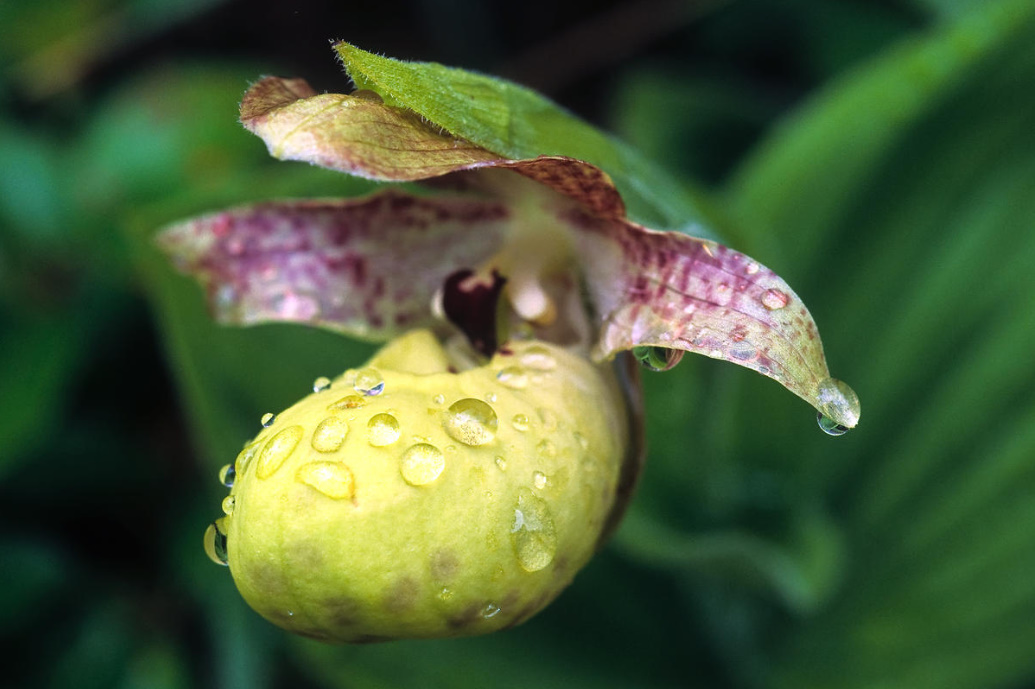
Cypripedium flavum is distributed in the mountains of southeastern Tibet, Yunnan and Sichuan at altitudes from 2700 to 3700 m above sea level. It often grows in large groups in open areas along the banks of mountain rivers, along the edges of coniferous and mixed forests, in sparse shrubs. In natural conditions, it occurs on soils both neutral and rather acidic, often despite the limestone rocks underlying them; at the same time, they are loose, rich in leaf humus and well moistened, but without stagnation of water. It often grows in company with rhododendrons and other Cypripedium species.
Since 2003, I have been growing Cypripedium flavum, and I was convinced that it is one of the most unpretentious species, comparable in unpretentiousness to C. macranthon. He feels good on a poor loam of medium gravity, in a light penumbra in an apple orchard. It winters well, blooms regularly in late May — early June and gives seeds.
Cypripedium tibeticum
More squat Cypripedium tibeticum (height 15-35 cm), also with a short rhizome and several leaves on stems, is distinguished by large burgundy flowers. Their shade can be from light, dull pink, to dark, such that from a distance it seems almost black. Darker veins are usually noticeable on the lateral and upper parts of the perianth, which makes the flower look striped.
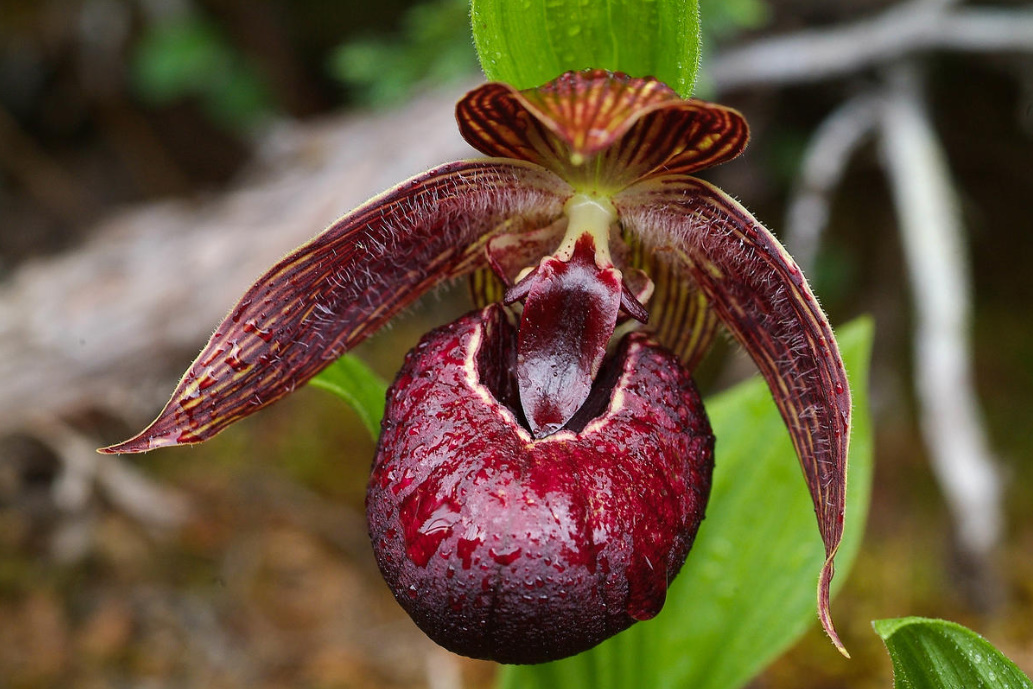
Cypripedium tibeticum is distributed in the same provinces of China as Cypripedium flavum, as well as in Bhutan and Sikkim. It enters the mountains even higher, up to 4200 m, settling on forest edges, alpine meadows and even on limestone outcrops and scree. Apparently, it is more light-loving and needs better drainage.
Cypripedium yunnanense
Cypripedium yunnanense, related to Cypripedium macranthos and generally similar to it, is also found in the mountains of southeastern China. It is distinguished by a smaller flower and the fact that the stem is naked and the leaves are strongly pubescent (in Cypripedium macranthos, on the contrary: a pubescent stem and more or less bare leaves).
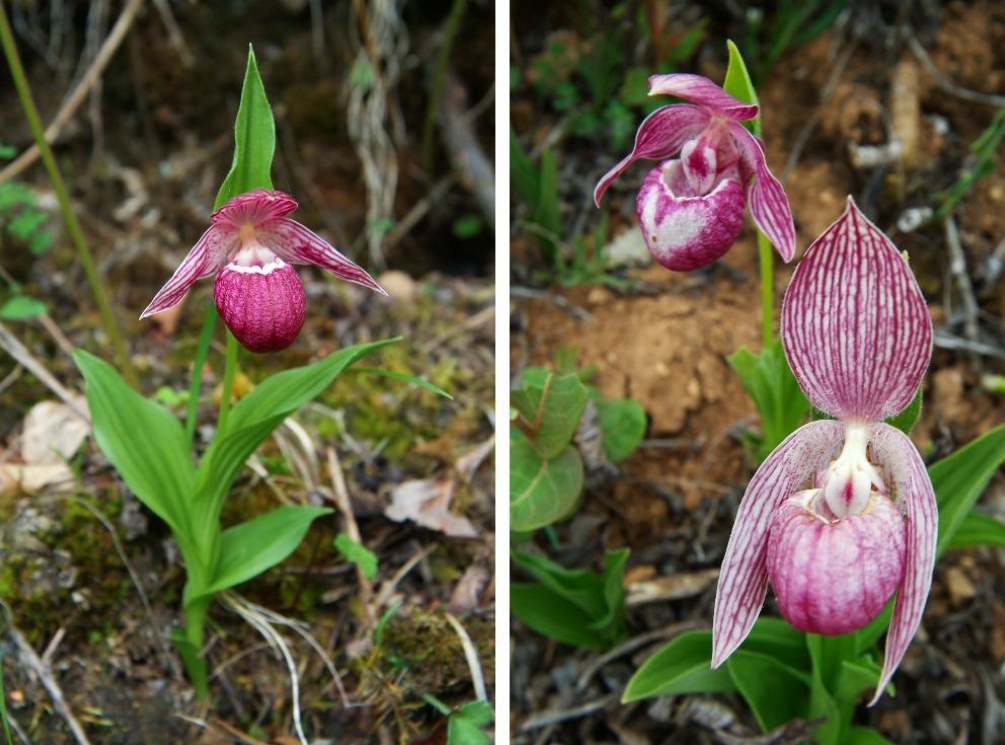
And so it is a perennial with a height of 25-40 cm, with several stems from a short rhizome, large leaves and pink flowers. Moreover, the lip is usually darker, and the other parts are slightly striped. In nature, it grows at an altitude of 2700-3800 m, on slightly acidic or neutral soils, preferring northern and western slopes covered with sparse pine forests and thickets of rhododendrons.
Other Cypripedium Species from China
The strange little C. plectrochilum has a very short rhizome, several stems 5-18 cm high, usually with three, rarely four leaves and one small but memorable flower. His lip is white or slightly pinkish along the veins of an unusual elongated conical shape, pubescent from above, and its tip bends back. Other parts of the flower are chocolate or greenish-brown. This Cypripedium grows on limestone, on stony soil, along the edges of pine and spruce forests, as well as in thickets of shrubs, at an altitude of 2300-3600 m, all in the same mountains of China and in Northern Burma.
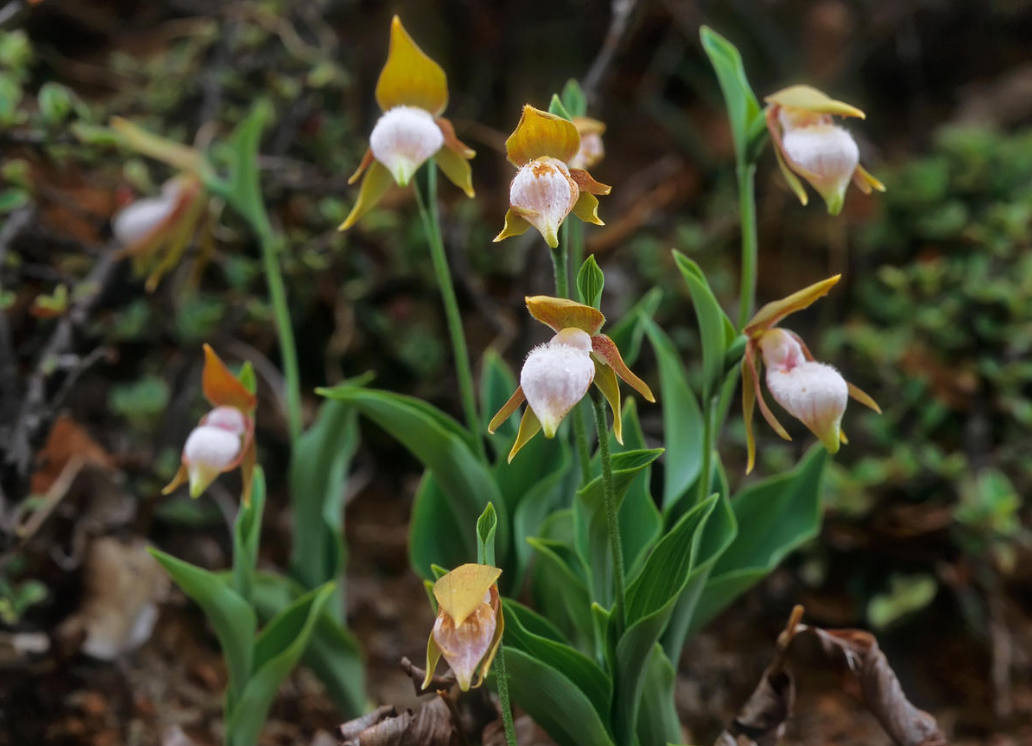
Interestingly, in the south-east of China, up to an altitude of 4100 m, C. guttatum is also found. Its range covers the Far East, Japan, Korea, China and western North America. A typical forest plant that lives in coniferous, mixed and deciduous forests, in clearings, and in the highlands of China can also go out on grassy slopes, preferring northern and northwestern ones. It often grows in large colonies.
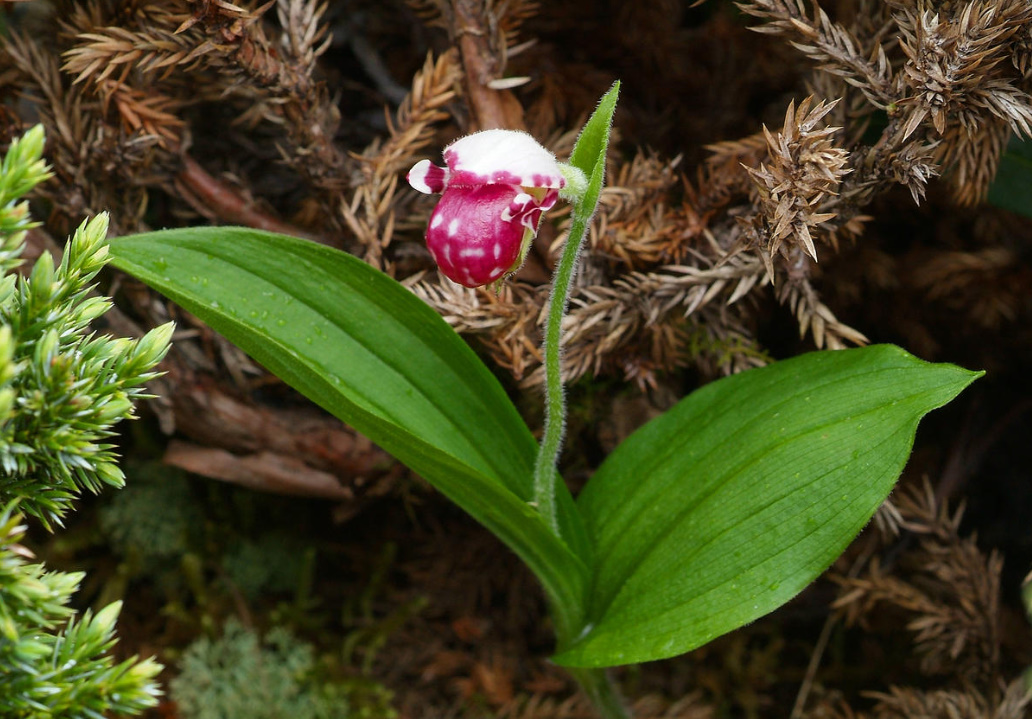
It is a small (10-30 cm tall) Cypripedium with a long creeping rhizome, two leaves on a stem and an elegant flower. The upper leaflet of the perianth is white, and the rest and the lip with pink or purple spots on a white background.
In addition to Cypripedium, other familiar genera of orchids are found in the Yunnan mountains — Platanthera, Oreorchis, Orchis.














